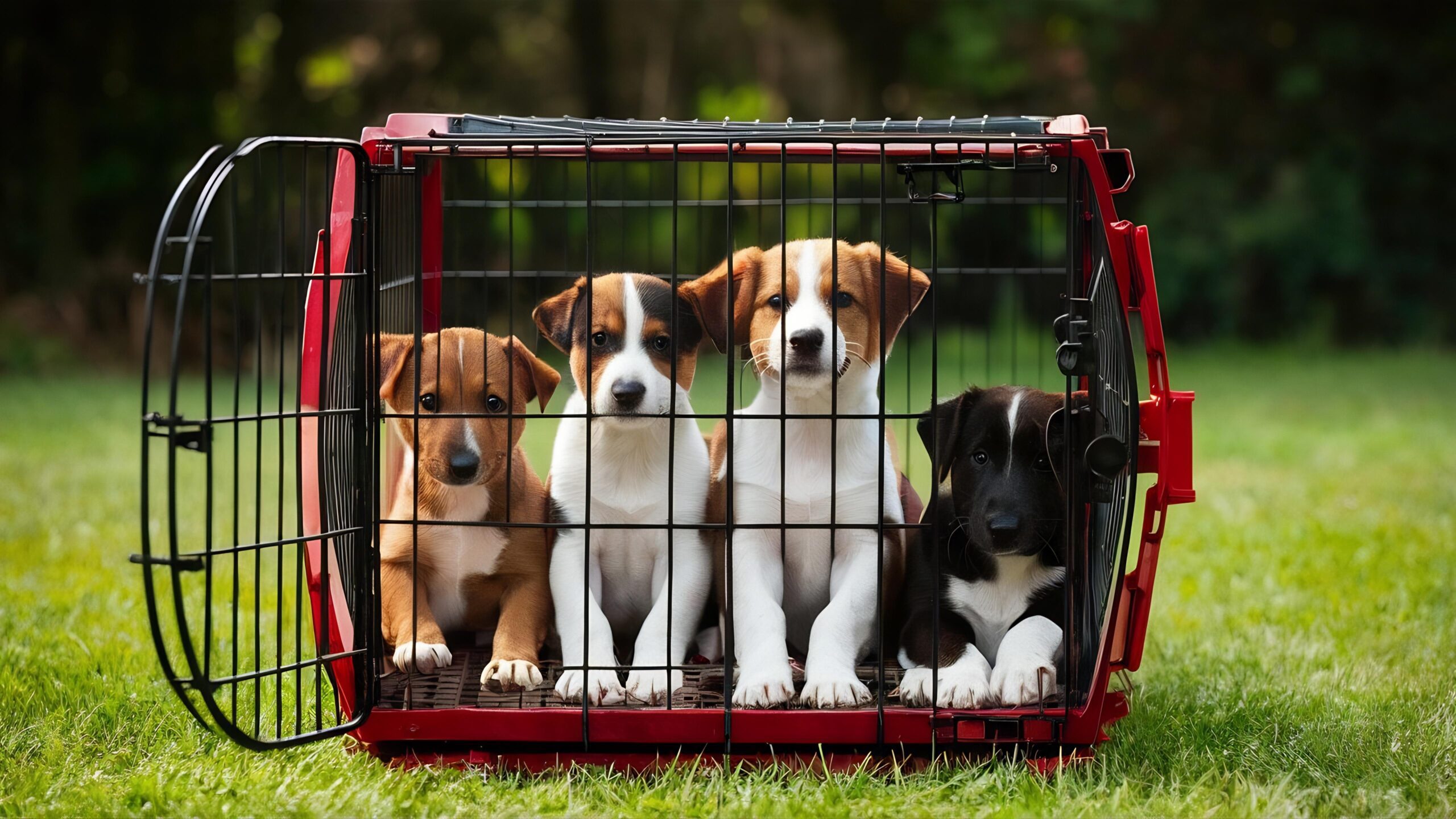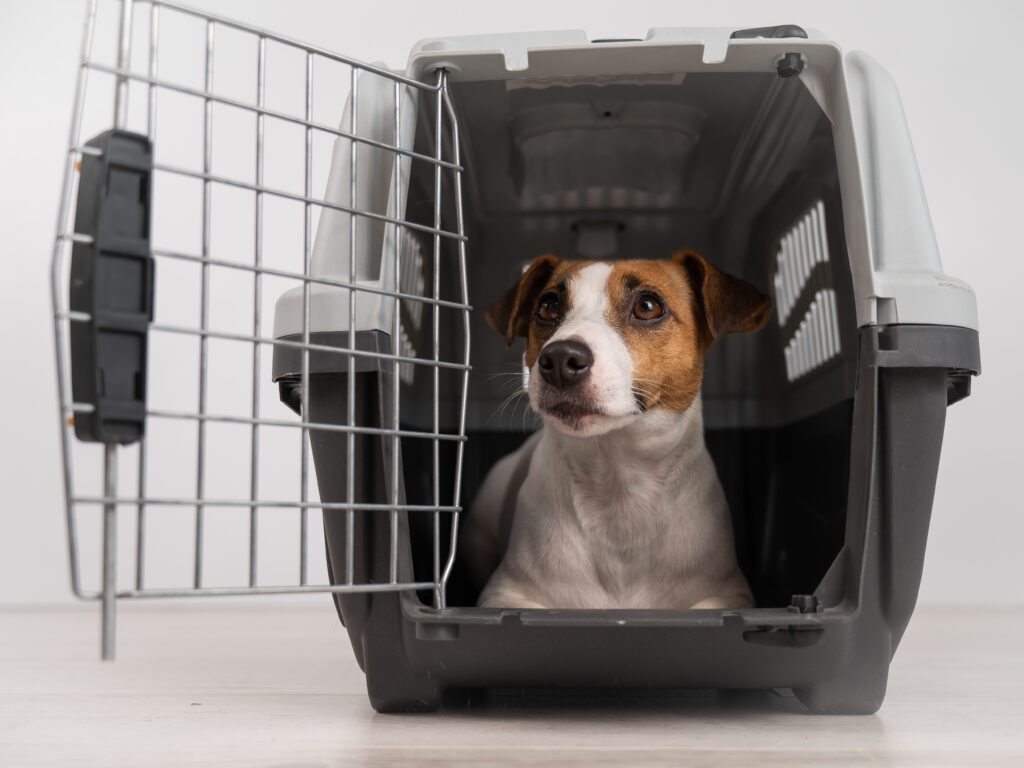
Choosing the right size crate for your dog isn’t just about comfort but their overall safety, training success, and happiness. An appropriately sized crate provides a cozy space where your dog can relax, feel secure, and even help with house training. On the other hand, the wrong size can lead to discomfort, anxiety, and behavioral issues.
If you’re wondering, “What size dog crate do I need?” or searching for a reliable dog crate size chart, this guide will walk you through everything you need. We’ll also share breed-specific recommendations, tips for measuring your pup, and common mistakes you want to avoid.
By the end of this post, you’ll have all the tools to select a crate that fits your dog perfectly confidently.
How to Measure Your Dog for a Crate
Knowing how to measure your dog correctly is important before buying a crate. Follow these simple steps to ensure you choose a size that provides the right balance of comfort and space.
Step 1: Measure Your Dog’s Length
- Use a tape measure to find your dog’s length.
- Measure from the tip of their nose to the base of their tail. Do NOT include the tail length, as this creates unnecessary extra space.
- Add 2-4 inches for comfort and ensure they can stretch out properly.
Example: Buddy, an adult Labrador Retriever measuring 36 inches in length, will need a few extra inches. A 42-inch crate would work well for him.
Step 2: Measure Your Dog’s Height
- Measure from the floor to the tallest part of your dog, which could be the top of their ears (for dogs with upright ears) or the top of their head.
- Add 2-4 inches to this measurement for headroom.
Example: Bella, a 22-inch-tall Poodle, would need a crate at least 26 inches tall.
Step 3: Consider Growth for Puppies
You’ll need to account for puppies’ growth. Use approximate adult measurements for their breed. Many crates come with dividers, enabling you to adjust the space as they grow into adult size.
Example: For Max, a 12-week-old Golden Retriever puppy, you might opt for a 42-inch crate with dividers. This ensures the crate grows with Max while preventing him from having too much space early on.
Measuring accurately makes all the difference between creating a cozy haven and choosing a crate that feels too cramped or overly spacious.
Dog Crate Size Chart (Breed-Specific Recommendations)
What crate size works best for your dog? Here’s a quick dog crate size chart with breed-specific recommendations to help.
Recommended Crate Sizes for Different Dog Breeds
These sizes are general guidelines, and measuring your dog for the best fit is always a good idea.
Choosing the Right Crate Type Based on Size
Not all crates are created equal, and the type you select should complement the crate size and your dog’s needs. Here are popular options based on crate size.
Adjustable Crates
Perfect for growing puppies like Charlie the Husky, the crate’s dividers make it easy to adjust the size, ensuring safety and comfort at every growth stage.
Soft-Sided Crates
These crates are great for small dogs like Milo the Dachshund, as they are lightweight and ideal for travel. However, they may not work well for chewers or escape artists.
Metal Crates
Sturdy and durable, these are excellent for large, strong dogs like Duke the Rottweiler. They provide excellent ventilation and are often collapsible for easy transport.
Plastic Crates
These crates are perfect for airline travel with dogs like Coco the French Bulldog. They are enclosed, offering both safety and privacy.
Common Crate Sizing Mistakes to Avoid

When choosing the best crate for large dogs or any breed, avoid these common sizing errors that could impact your dog’s well-being.
- Crate Is Too Small
A crate that’s too small can cause discomfort, anxiety, and behavioral problems. Cramming a German Shepherd like Rex into a medium-sized crate is completely wrong and unfair to your pet.
- Crate Is Too Big
While it might seem generous, too much space can be counterproductive. Some dogs may treat a larger crate as two separate areas—one for sleeping and one for bathroom accidents! A Yorkie like Bella doesn’t need an extra-large crate.
- Not Accounting for Adult Size
Puppies grow fast, and many new dog parents don’t consider how much space their pup will need in a few months. For a Boxer puppy like Leo, using a crate with a divider is smart to cater to their rapid growth.
Avoiding these mistakes will save you money and ensure your dog feels home in their crate.
The Perfect Fit for Your Furry Friend
Selecting the right crate for your dog may seem overwhelming, but with proper measurements and a little planning, it’s a straightforward process. Remember, the goal is to create a safe and comfortable retreat for your furry friend—whether it’s a tiny Chihuahua or an extra-large Saint Bernard.
If in doubt, refer to a dog crate size chart and start by measuring your dog to find the perfect fit. Investing the time to choose the right crate can make all the difference in your pup’s happiness and well-being.
Need more help? Please browse our store for a wide range of crates, or reach out to our team for expert advice. Your pup deserves nothing less than the best!


